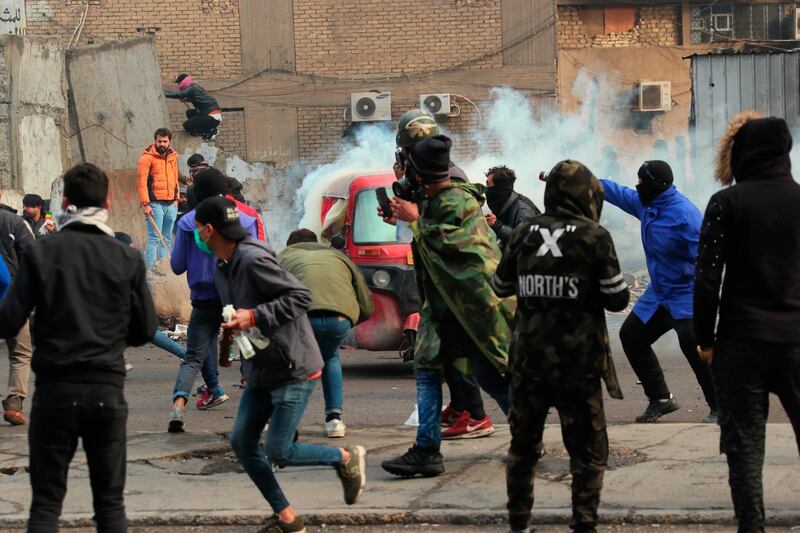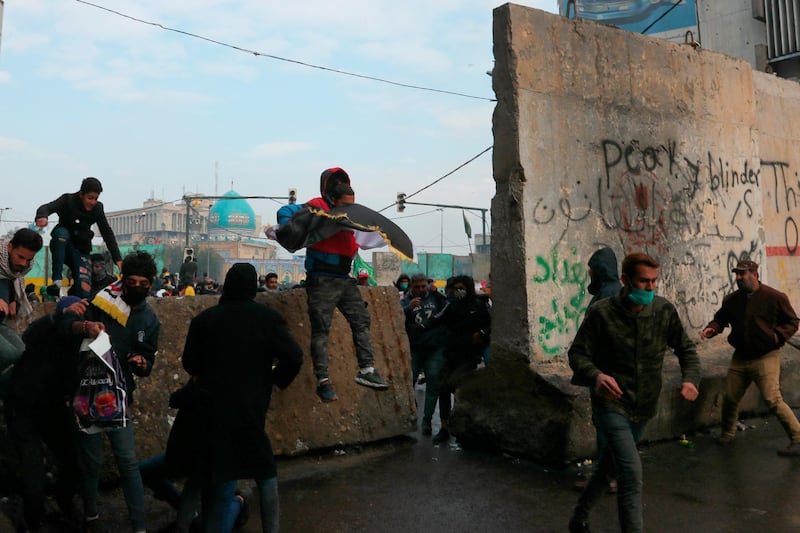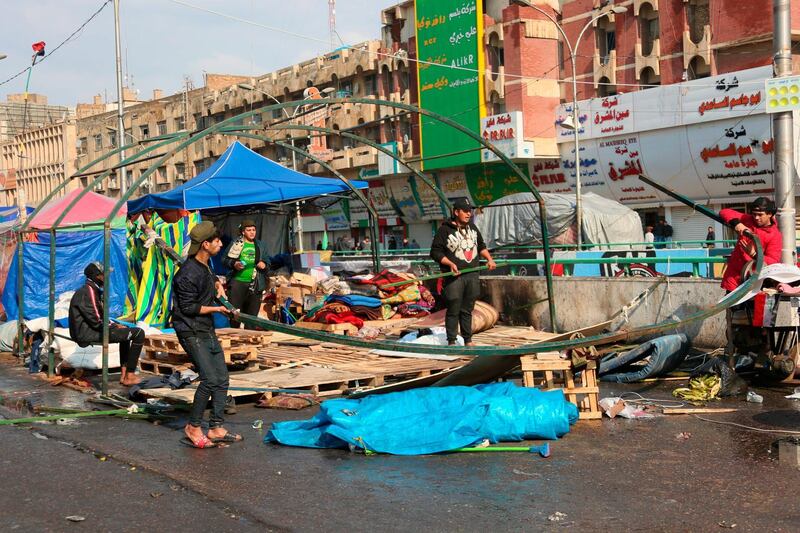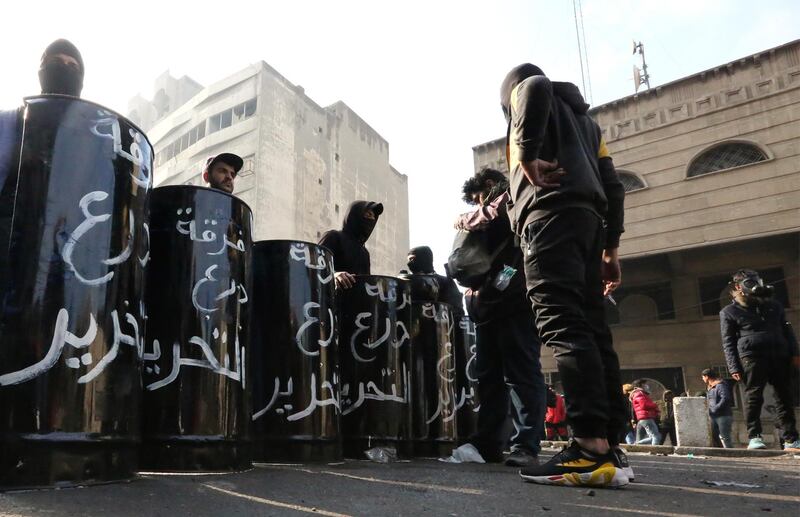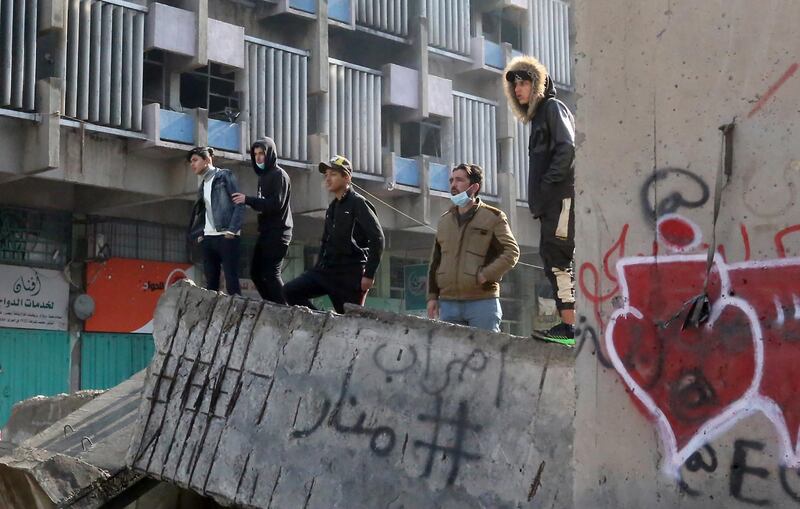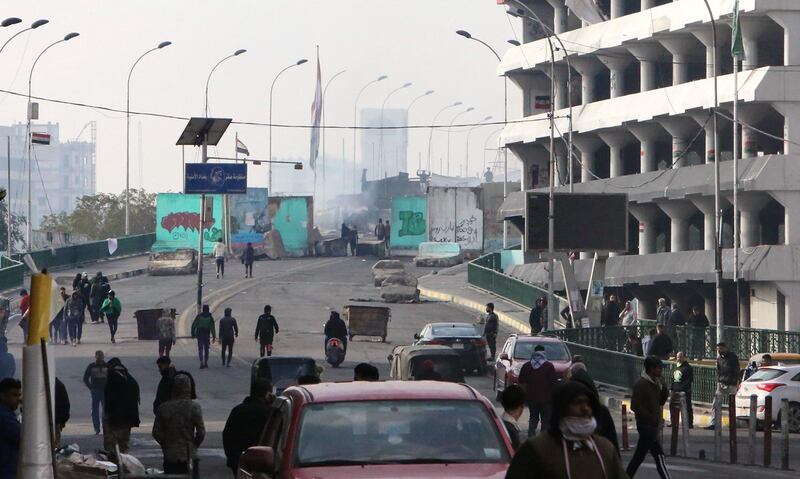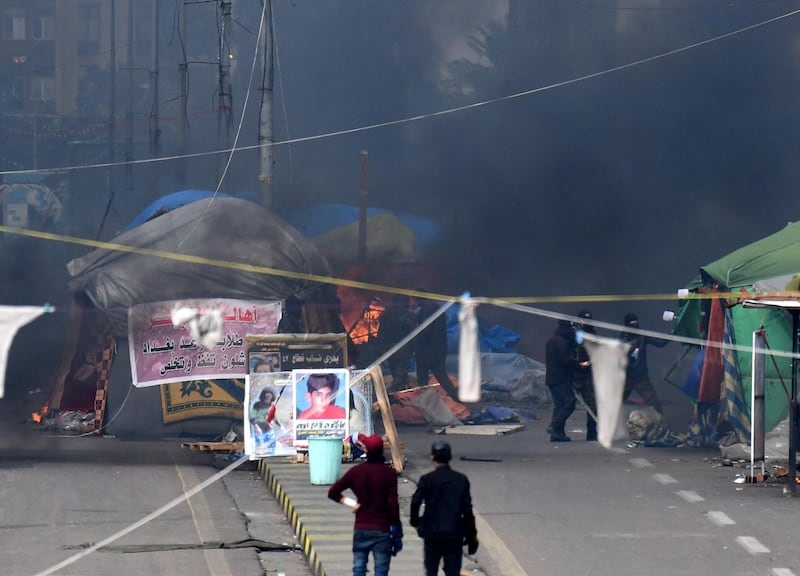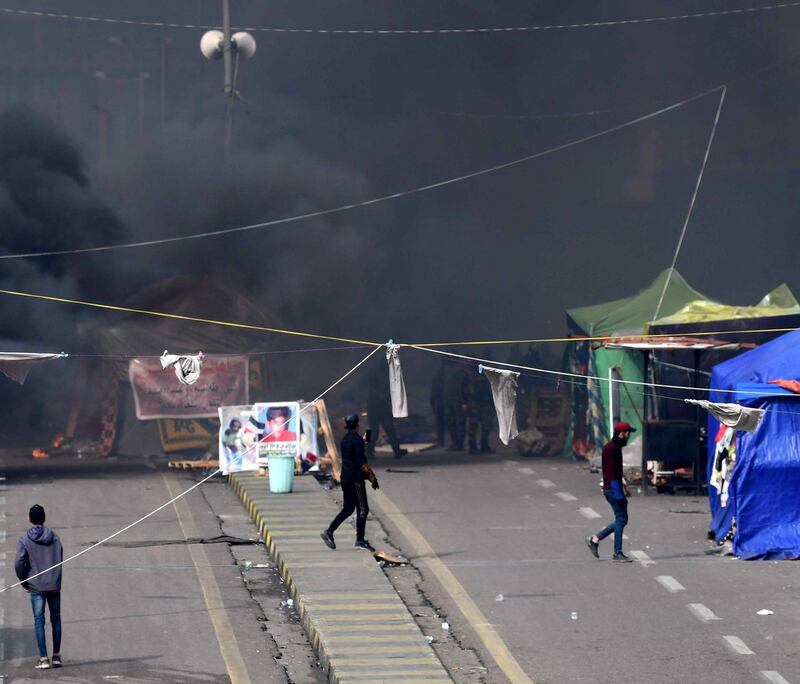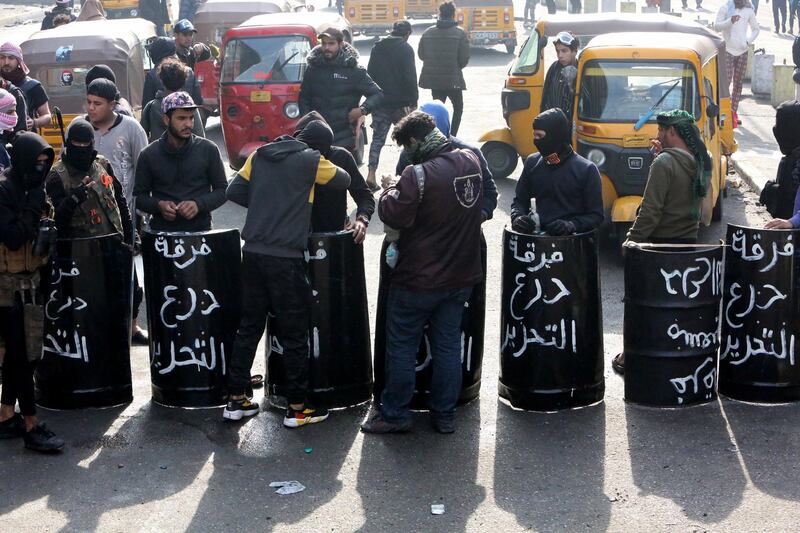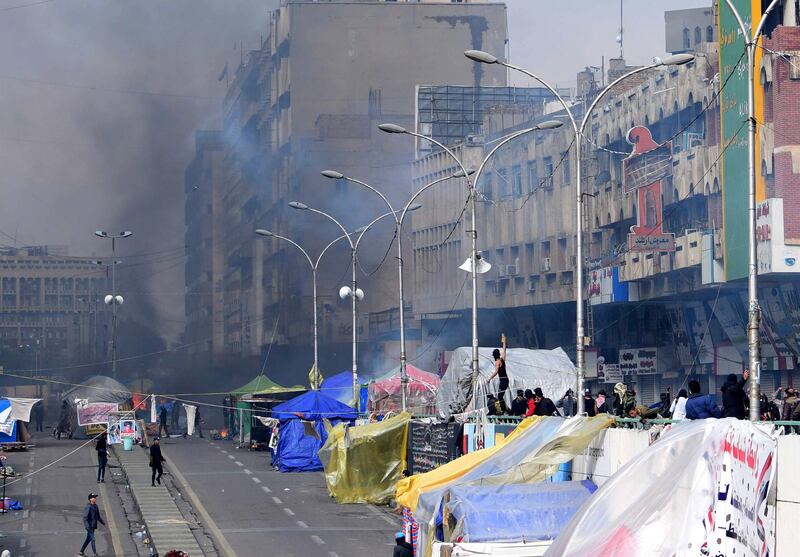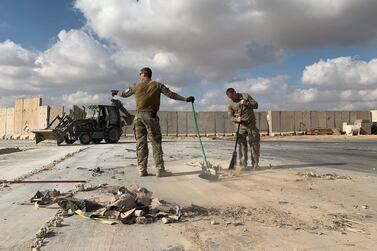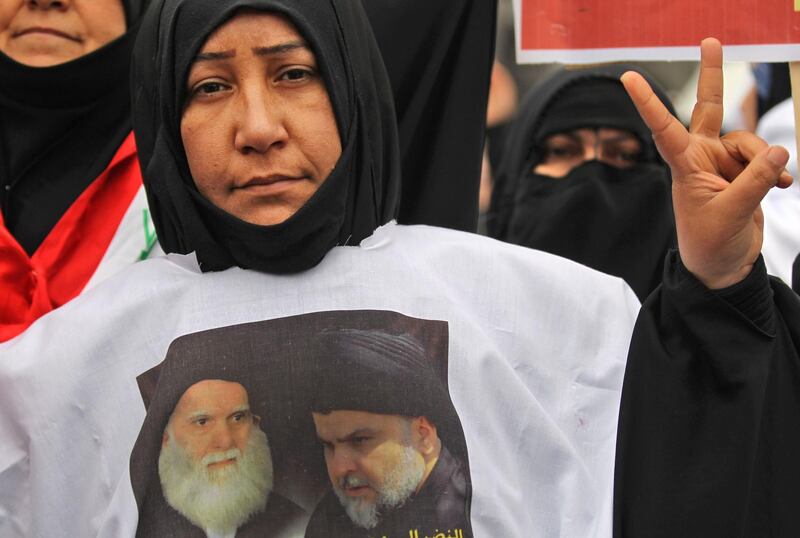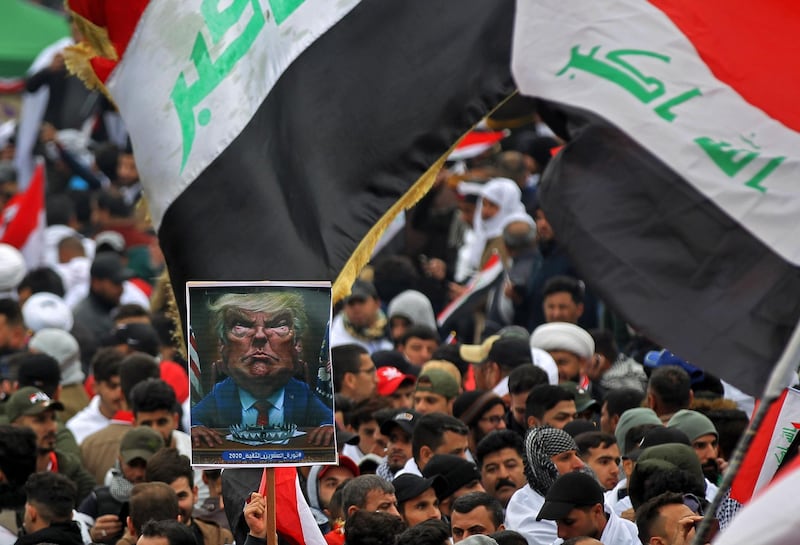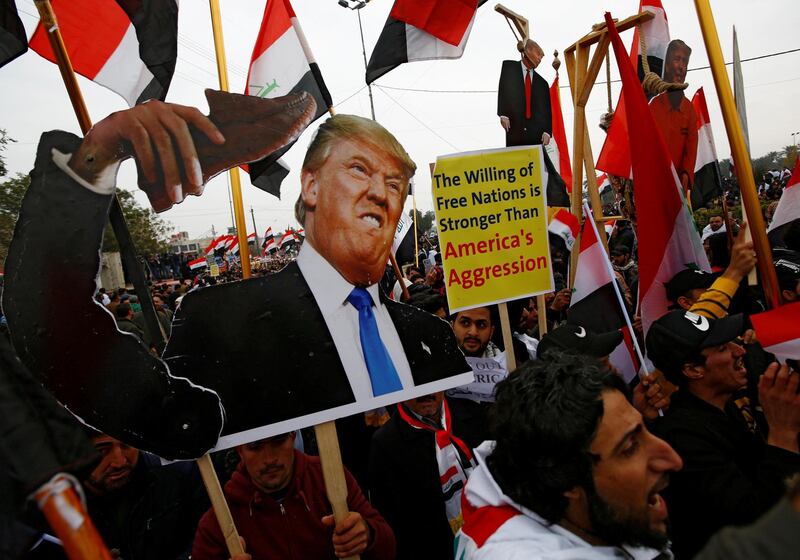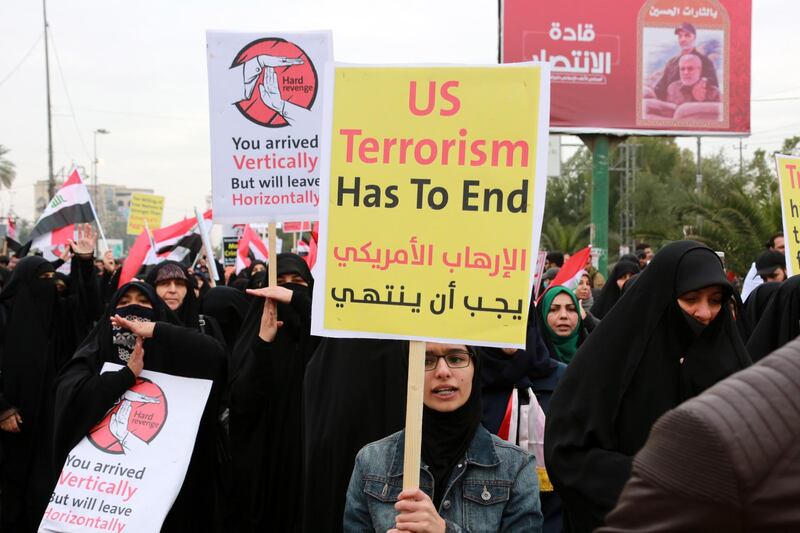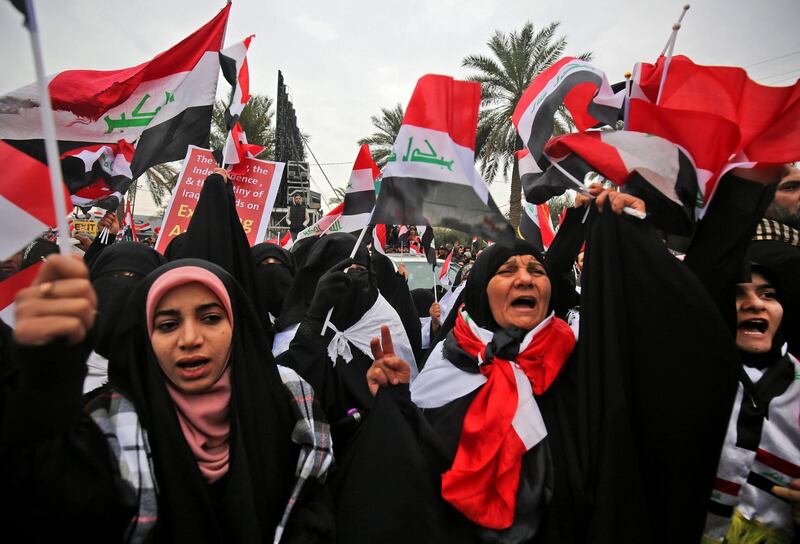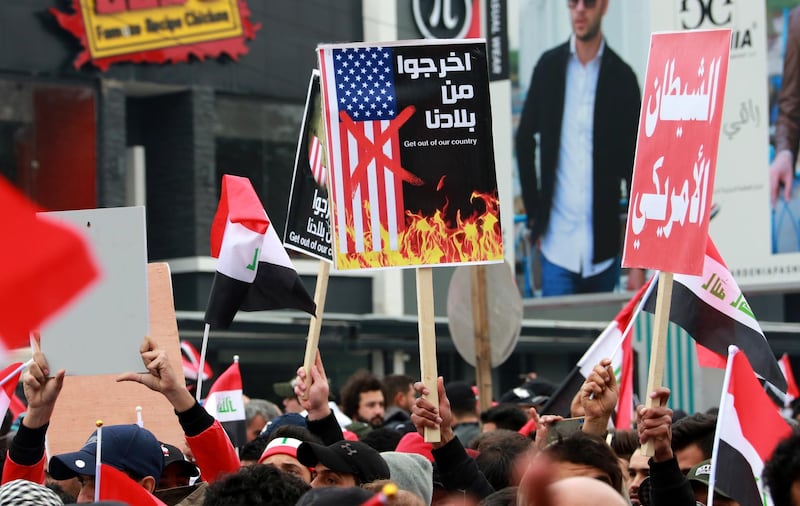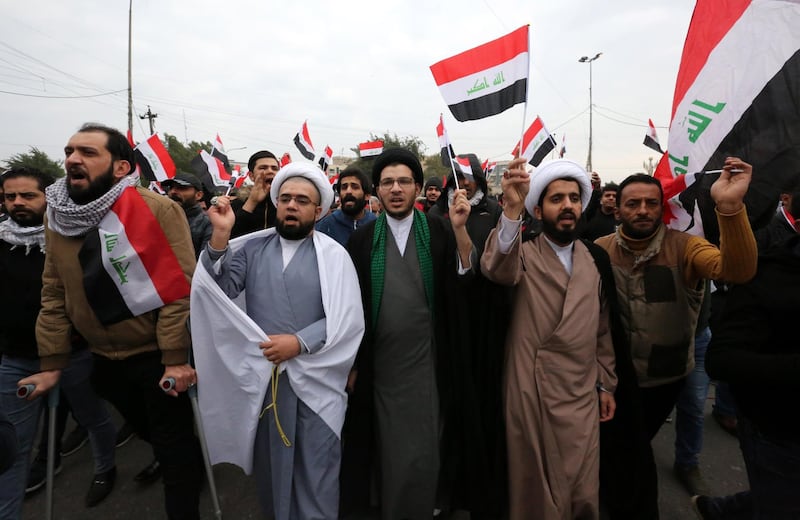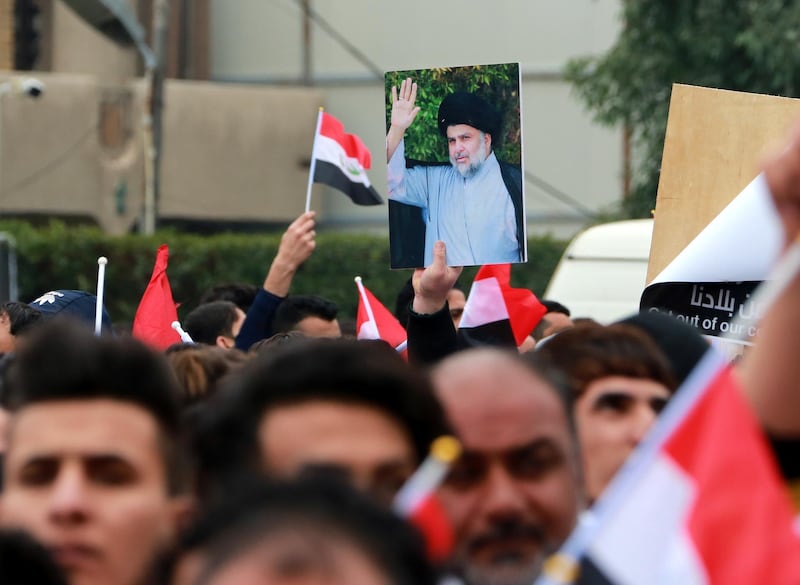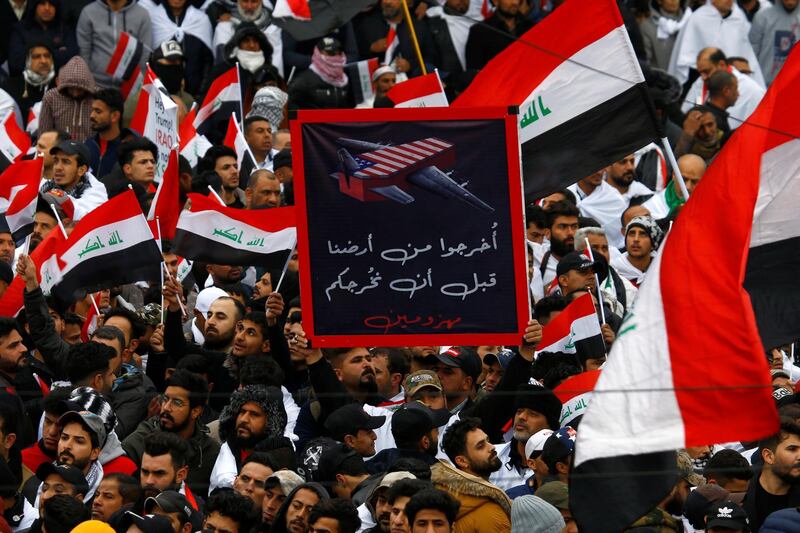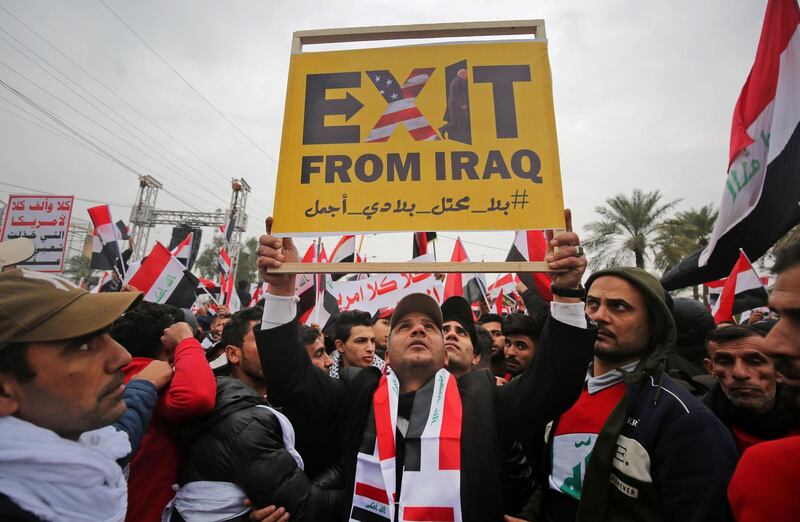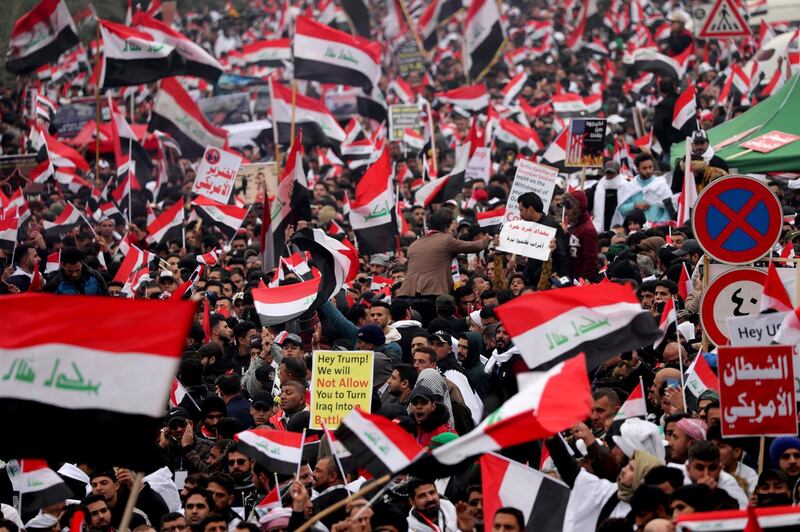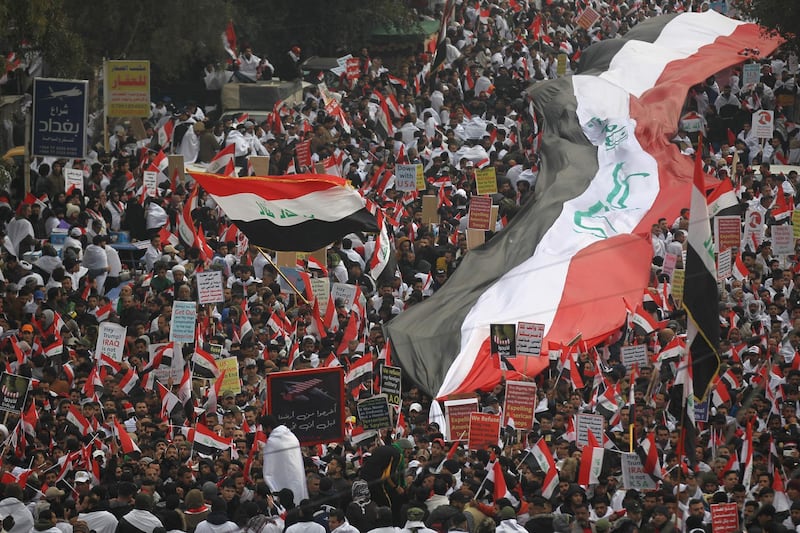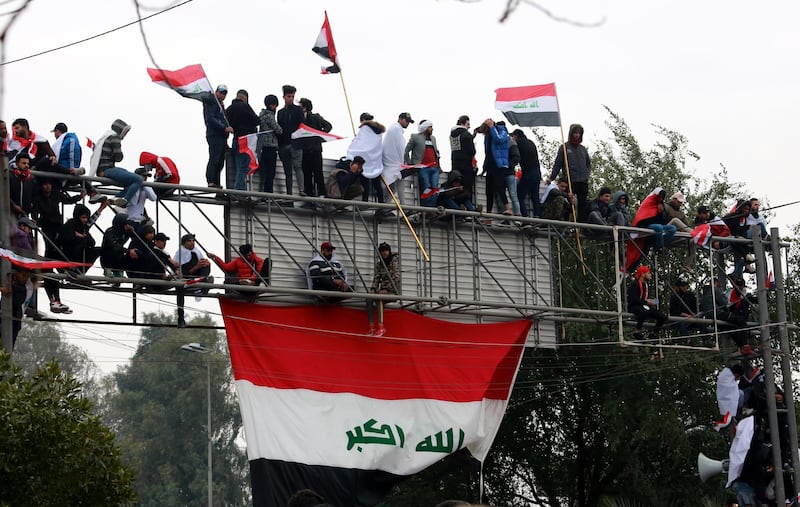Iraqi security forces appear to have launched an operation to clear Baghdad's central squares, which have been home to a months-long national uprising.
Riot police fired tear gas and live rounds on Saturday, forcing hundreds of protesters to retreat from Al Khilani Square that lies about 500 metres north-west of Tahrir Square.
In Tahrir Square, a man yelled "where are you all going?" through a megaphone in an effort to rally panicking protesters, while masked men ran with crates of Molotov cocktails in the direction of gunfire.
Since October, thousands of protesters in the capital and across the south have demanded the resignation of the government and the appointment of a new Cabinet that can address rising unemployment and almost non-existent public services.
The police operation started after populist Shiite cleric Moqtada Al Sadr appeared to withdraw his support for the movement and his supporters began to leave.
There were no immediate reports of casualties on Saturday but at least seven people were wounded in clashes with police earlier in the day, medics and security sources said.
The clashes took place after authorities began removing concrete barriers near Tahrir Square and across one main bridge over the Tigris River in Baghdad.
Protesters spent more than an hour battling a major fire at the entrance of Rafidain Bank on Saadoun Street, which links Tahrir with Al Khilani squares. The blaze started after security forces set fire to nearby tents.
Many others in the protest encampment were angry with Mr Al Sadr.
"I hate that man, I hate him as much as I hated [Iranian general Qassem] Suleimani," a tearful Haider Ryman told The National.
Hassan Riyadh, 23, a student from Khadimiya, told The National, that: "It is just us and God left now. If they [security forces] come to the square then of course there will be violence – you saw what they did in Basra."
Security forces stormed a number of protests sites in Baghdad, Diwaniyah and Basra on Friday.
In Basra, they ripped and set tents on fire, activists told The National. Videos on social media showed tents burning .
Security forces said they arrested at least 16 protesters in Basra. At least 21 people were wounded in the morning operation, Reuters reported.
By early afternoon, security services had yet to reach Tahrir Square itself. But in the two squares, fear of a final push to clear the streets remained.
"If they come here, they will finish the demonstration. We don't know what will happen after that," Mr Riyadh said.
Despite a core contingent of demonstrators expected to dig in, traffic began to flow along the roundabout that circles the Al Khilani Square after the officers pushed protesters towards Tahrir Square.
The operation came just hours after dozens of supporters of Mr Al Sadr packed up their tents and left the protest site.
The move left large holes in the sea of tents set up in central Baghdad since early October, when thousands took to the streets demanding an end to years of corruption, stagnation and mismanagement.
Though a minority of those camped out in Tahrir, supporters of Mr Al Sadr had played an important role in recent months, feeding thousands camped out in the square.
Whether or not the protest site can remain sustainable without their logistical support is a question that hangs over the future of the movement.
As he rolled up a carpet, Hussein Oush from Baghdad said: “We got a call last night, and now we are going home”.
But not all of Mr Sadr's supporters heeded the call to head home.
Ziyad Al Darraji from Sadr City said he had chosen to stay for the sake of the more than 500 protesters killed since October.
"We've been here for three months feeding protesters, we clap for all those who left [but] came back, we have to keep the square powerful."
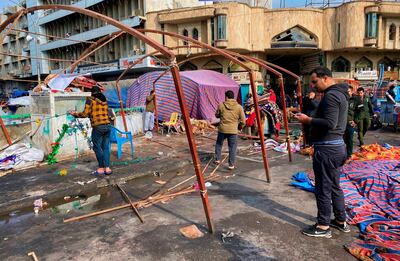
Mr Al Sadr, who emerged as one of the biggest winners from the last election but oscillates between being a strong nationalist and backing Iranian influence in the country, vocally backed the protest movement although he fell short of calling on his supporters to take to the streets.
Still, he demanded a government that could provide jobs and an end to years of corruption that have seen billions in oil revenue disappear from the state's coffers.
On Friday, Mr Sadr wrote on Twitter that he would "try not to interfere in the issue [of protesters], either negatively or positively, so that they can shepherd the fate of Iraq".
While he did not elaborate, many saw it as confirmation that he had withdrawn his endorsement.
His intervention came hours after his supporters held what they called a million man march against American troops stationed in the country.
The protest came after Iraq's parliament voted for the US to leave Iraq after a January 3 air strike killed Suleimani and Abu Mahdi Al Muhandis, the Iraqi head of its Iran-backed militias.
In southern Iraq's Basra, protesters urged Mr Sadr to reconsider his withdrawal. In a letter circulated on social media, they called for the backing of Sadrists, without whom they feared attacks by security forces.
– additional reporting by agencies
